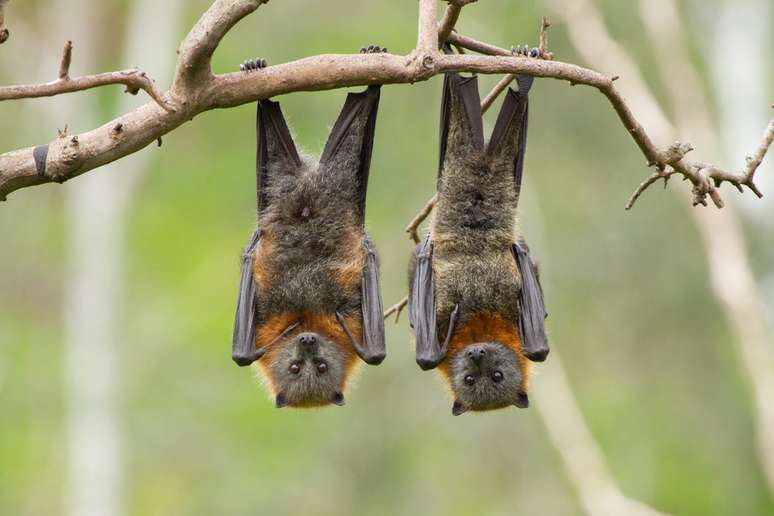Flying mammals control insects and pests in agriculture, playing a vital role as pollinators and seed dispersers
A research team from the Institut Pasteur de São Paulo (IPSP) will investigate the viral groups present in bats from the Atlantic Forest. The goal is to understand the diversity of viruses that exist in these animals and then try to address the potential of these agents to contaminate other mammals or even humans.
Led by IPSP researcher Luiz Gustavo Góes, the project is expected to last four years and is based in the University City of the University of São Paulo (WEP), In St. Paul. The project is financed by the State Research Support Foundation of São Paulo (Fapesp) and the Institut Pasteur de Paris. The IPSP is an institution formed by the French foundation and the USP.
The choice of the animal is linked to its history in the emergence of contaminated viruses in humans. In the scientific community, research into this interaction began to bear fruit in the 1990s.
In 2002, the first epidemic of severe acute respiratory syndrome occurred (SARS), started in China. Subsequently, researchers discovered that the Sars-Cov virus, a relative of Sars-Cov-2, originated in bats. In the case of Sars-Cov-2, the virus that gave rise to the 2020 pandemic, this relationship with bats has not been demonstrated, underlines Góes.
It highlights, however, the need not to stigmatize these flying mammals. Bats have great ecological importance and work to control insects, which has reduced humans’ exposure to disease vectors. They also feed on animals considered agricultural pests, which reduces the need for pesticides.
Species that feed on nectar or fruits play a fundamental role as pollinators and seed dispersers.
The researcher has already worked on previous studies dealing with the relationship between these animals and viruses potentially capable of infecting humans, as in his post-doctoral work. In the work, he and other colleagues suggested that bats are an underestimated reservoir of arenaviruses. These agents can cause severe febrile hemorrhagic syndrome in humans.
Some characteristics can increase the susceptibility of a certain region to becoming a source of emerging diseases. Some of them are the presence of humid forest, deforestation, urbanization and increased contact between humans and wild animals.
“If we consider all these factors, Brazil is classified as a potential region for the emergence of emerging diseases,” says Góes.
In this way, researchers will be able to take a further step forward in their analysis by having access to different organs, such as intestine, lung, kidney, spleen, liver. To diagnose rabies it is necessary to kill the animal to extract the contents of its brain. The idea is that what is not used by the zoonosis centers is sent to the University City laboratory.
According to Góes, different viruses have the propensity to infect different organs. Gaining access to diverse bat tissues will facilitate the search for emerging viruses.
The group will analyze the genetic material collected and compare it with what already exists in the literature and in the global genetic database to verify whether it is a new virus. If necessary, researchers will carry out initial analyzes to see whether the virus has the potential to infect other animals, such as humans.
“This is a first step towards understanding the zoonotic potential of these agents and trying to determine whether there is an emergency risk,” says the researcher.
Source: Terra
Ben Stock is a lifestyle journalist and author at Gossipify. He writes about topics such as health, wellness, travel, food and home decor. He provides practical advice and inspiration to improve well-being, keeps readers up to date with latest lifestyle news and trends, known for his engaging writing style, in-depth analysis and unique perspectives.





![It All Begins Here: What’s in store for Tuesday, November 4, 2025 Episode 1299 [SPOILERS] It All Begins Here: What’s in store for Tuesday, November 4, 2025 Episode 1299 [SPOILERS]](https://fr.web.img6.acsta.net/img/04/37/04370e2b27de1bab0fc2e0f1f26bd36e.jpg)



